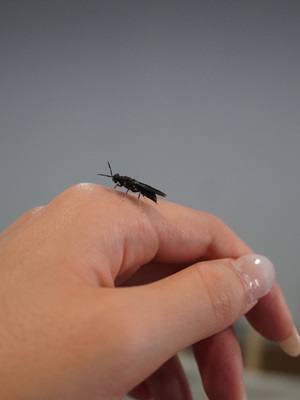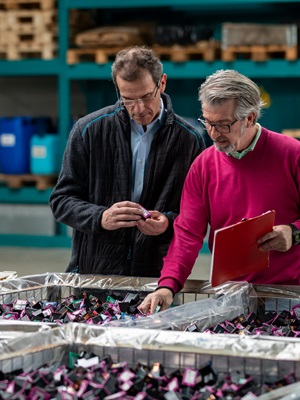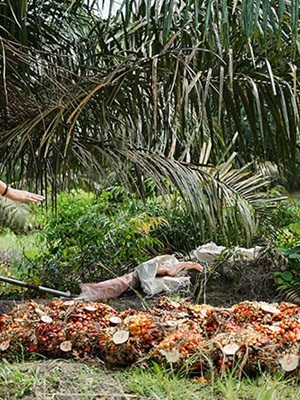Many parts of the world have agreed to commit to the Net Zero Emission (NZE) target. One of the most intense efforts has been transitioning from fossil-based to renewable energy. There are several types of renewable energy, but the highest engagement is currently gained by bioenergy. Bioenergy is a kind of energy that comes from biological sources or we can call it biomass. They can be crops, algae, microbes, or even biowaste. Biowaste may be in the form of food waste from leftover foods on your dining table which can be used as a source of bioenergy rather than ending up in your trash bin. The same applies to other biowaste types. For example, POME or palm oil mill effluent. It is a liquid waste from palm oil. This waste is usually treated, and after its conditions are fulfilled the requirements to be thrown away, it will be thrown away into the river or other water channels. Rather than thrown away, we can actually obtain bioenergy from POME with some treatments. Back then, people were not aware yet that something called 'waste', which can be removed easily, can be very useful for this world.
How can diamonds be made from trash? There are several processes for obtaining bioenergy from biowaste. The first process that starts everything is decomposition, which involves anaerobic digester as equipment. In this anaerobic digestion process, anaerobic (without oxygen (O2)) conditions and microorganisms (which are anaerobic too!) are used because if there is any O2, the ones produced are water vapor (H2O) and carbon dioxide (CO2), not methane (CH4). During this process, there are several stages which start with a stage called hydrolysis. In this stage, the macromolecules (carbohydrate, fat, and protein) that compose organic compounds (in this case, in the form of biowaste) are converted into smaller sizes (glucose, fatty acid, and amino acid) with the help of enzymes produced by microorganisms. These micromolecules are then converted into volatile fatty acids, hydrogen sulfide (H2S), and CO2 by acidogenic bacteria during the acidogenesis stage. Subsequently, in the acetogenesis stage, these volatile fatty acids are broken down into acetic acid (CH3COOH), hydrogen (H2), and CO2 by the acetogenic bacteria. In the last stage, methanogenesis, methanogenic bacteria convert CH3COOH and H2 into CH4 and CO2. The output of this process is biogas (contains CH4 (around 45-85%), CO2 (around 25-50%), H2O, and traces of other gasses (such as H2S, H2, O2, etc.) and digestate (European Biogas Association, n.d.). This biogas can produce heat and electricity in engines by combustion.
Recently, efforts have been made to take these biowastes to a higher level. Biogas may sound fancy enough, but its utilization is limited. Biogas contains many impurities. These impurities can harm the metal parts of engines by corrosion. Therefore, biogas is mostly used for cooking and not in industries or automotives. Some parties are trying to upgrade biogas into something more suitable for industries and automotives, so it can lead to more profit for them. The upgraded version of biogas is known as biomethane. To obtain biomethane from biogas, the biogas first requires conditioning, in which H2S and moisture or H2O are removed. After that, it is followed by the most important part, biogas upgrading, which is the removal of CO2 and the generation of biomethane. Biomethane can be directly used for combustion by plants or factories. It can also be injected into the gas grid; therefore, it can be easily used for cooking. Biomethane can also be converted through chemical processes into biomethanol which is commonly used as fuel, solvent, and raw material in some products (such as plastic, silicon, etc.). There is also bio-CNG or CBG, which is a compressed biomethane gas. CBG is usually used as a fuel and electricity generator.
Biogas was trash once. However, with some treatments, it can turn into something more useful. Even its by-products, digestate and CO2, are useful. The digestate can be spread into fields without any treatment and acts as a good organic fertilizer because it contains undegraded organic compounds. It can also be used as a raw material for chicken feed. On the other hand, CO2 can be captured for use in the food industry (for example, carbonated soft drinks) or to enhance plant growth (with certain treatments). All of these can help reduce global emissions and greenhouse gas effects, helping the world reach NZE targets.
Reference
European Biogas Association. (n.d.). About Biogas and Biomethane. Retrieved from https://www.europeanbiogas.eu/about-biogas-and-biomethane/.
Posted 13/11/2024

















